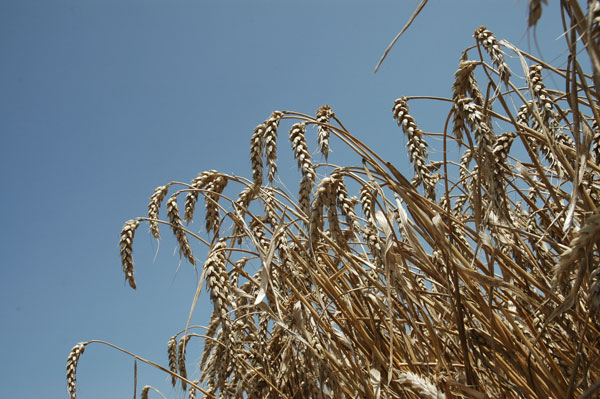March 24, 2016

After the recent freeze, a relatively large wheat producer posted that they had lost five out of the last six wheat crops. “It’s like two farmers were talking. One says, ‘If it doesn’t rain, I’ll need to rob a bank.’ The other replies, ‘If it doesn’t rain, I will have robbed a bank.’”
Rather than cry in their milk, some producers are calculating the potential return from what’s left of their wheat crop, or from destroying the wheat and planting summer crops.
Experience has taught growers that the wheat plant can produce in the most hazardous conditions, so one choice is to wait and see how much damage there is, and then estimate how much the wheat will recover.
In southwestern Oklahoma, wheat may be forward contracted for $4.20. This price was calculated by using local elevator forward contract basis bids. Some elevators in southwestern Oklahoma are offering a forward contract basis of minus 65 cents. Using a KC July contract price of $4.85, the 2016 forward contract harvest price would be $4.20.
The only costs left to produce the 2016 wheat crop are possibly $12 per acre for spraying (insects and/or disease) and $25 for harvesting. You ask, “What about the $140 already invested in the wheat?” That $140 is already lost. For comparison purposes, all that matters is the $37 required to get what’s left in the bin.
FIGURING SALVAGE
At this point, you’re just figuring out what you can salvage. With wheat, it’s the number of bushels per acre above how many bushels it takes to pay to get what’s left in the bin. That is 8.8 bushels per acre (calculated by dividing $37 by $4.200.
If you can produce more than 8.8 bushels per acre, it will pay you to harvest what’s left. Assume that production will be 15 bushels per acre. The total return would be $63, or $26 above remaining costs ($63-$37).
You’ll compare this $26 to the potential return from alternate enterprises.
For example, assume that wheat is destroyed and grain sorghum is planted. (Side: If you have crop insurance, get clearance from your crop insurance adjuster. You’ll probably have to leave a strip to determine what the yield would have been.)
Assume that the expected yield for sorghum is 65 bushels per acre, the expected price is $3.25, and variable costs are $190 per acre. The expected net return would be $21 per acre (65 bu x $3.25=211; $211-$190=$21). In this case you’re better off harvesting 15 bushel wheat.
In this example, sorghum yield was based on production in southwestern Oklahoma. Price was based on local elevator forward contract price bids. Some elevators are offering a forward contract price based on a minus 60 cent basis off the CBT December corn contract price ($3.85-$0.60=$3.25).
COMPARING ALTERNATIVES
Farming requires semi-complex calculations that may be used to compare different production alternatives. Yields, prices, and cost estimates used are critical. Increasing the sorghum production 5 bushels per acre adds $16 to the return and makes sorghum $11 better than wheat.
For the latest on southwest agriculture, please check out Southwest Farm Press Daily and receive the latest news right to your inbox.
If you’re a farmer, you have to make risky decisions. Good decisions are based on educated guesses about yields, prices, and costs. The calculations increase the odds that the good decisions will turn out right. But nothing is guaranteed.
What it boils down to is that in good times and bad times, you’re a farmer. And if you’re a farmer, you produce crops.
About the Author(s)
You May Also Like






